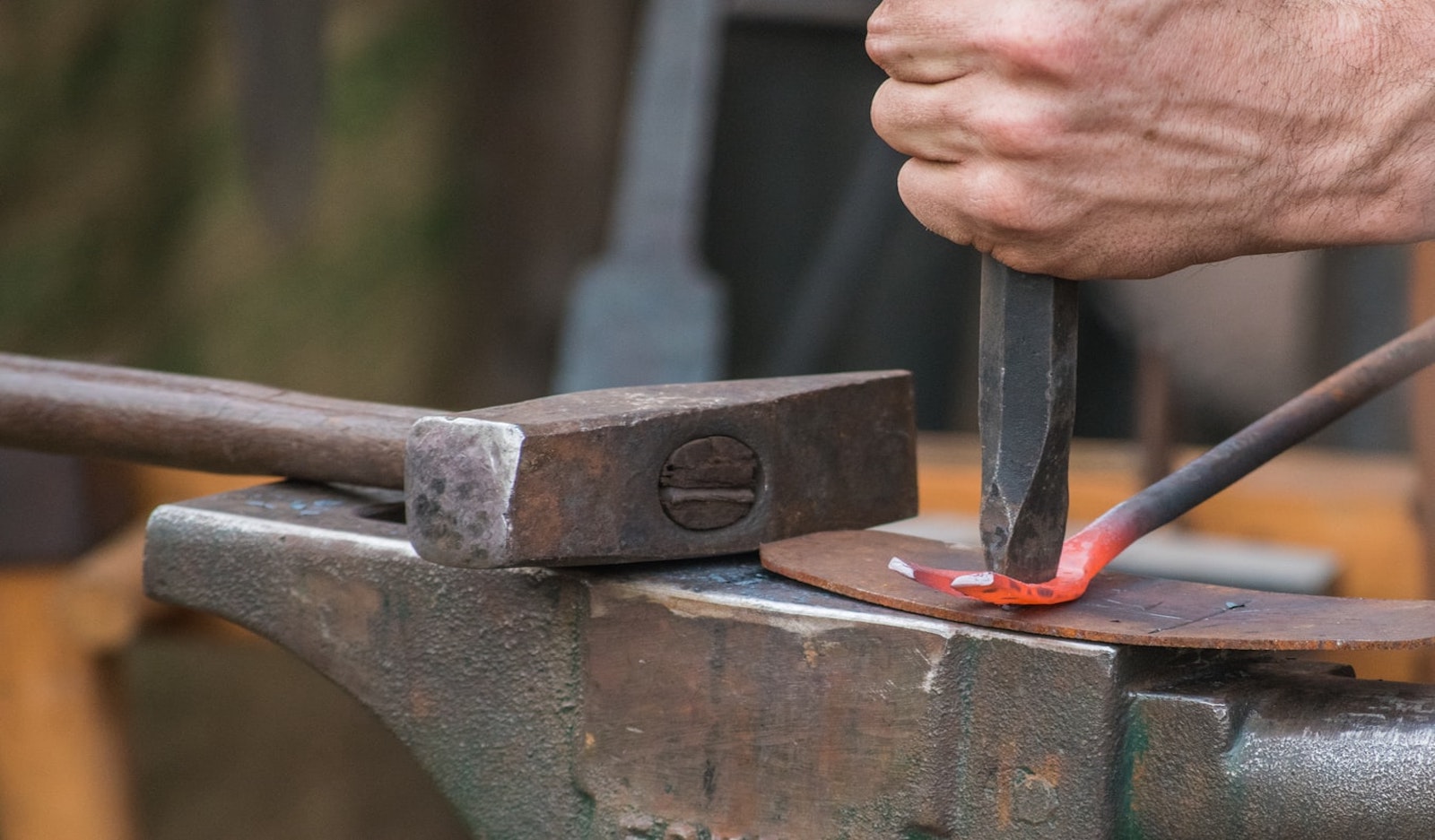While we have had a close look at forged steel in the past, the history behind the process is just as interesting. Take a look at the intriguing history of the forged steel process?
What is forged steel?
Forged steel is an alloy of carbon and iron which is manufactured by a series of compressions under extremely high pressure.
The history of forged steel
The steel forging process is already 6,000 years old, with the first forging techniques dating back to at least 4000 BC and perhaps even earlier. Bronze and iron were forged to make hand tools, weapons and even jewellery for the rich. Gold was the very first metal ever to be forged, used to make a hammer. By the end of the 19th century, people began using iron and steel in the forging process.
When the steam engine was first invented, it revolutionised the forging process, allowing smiths to go far beyond the hammer welding process, producing parts primarily for the railway, the car, and the agricultural industry.
Further developments within the industry meant that it was becoming cheaper and easier to forge high-quality steel and the development of the open-hearth steel making process toward the end of the 19th century created more opportunities within the industry.
The industrial revolution allowed for even further improved techniques and methods, meaning the volume in which steel was being forged began to grow rapidly. As electricity came into the picture, engineers began to understand new ways that steel can be forged quickly and easily, with less skill required compared to earlier techniques.
Now, the steel forging industry works to produce a vast range of forged steel products for use in an infinite number of industries, including the aerospace, automotive, mining, agriculture, and energy industries.
Types of forged steel made today
Steel forging can be classified into three categories depending upon the forming temperature:
Hot forging of steel: The forging temperature is between 950 and 1250 degrees Celsius, resulting in good formability and requiring low forming forces.
Warm forging of steel: The forging temperature is between 750 and 950 degrees Celsius, resulting in limited formability and requiring higher forming compared to hot forging.
Cold forging of steel: The forging temperature is at room condition, self-heating up to 150 degrees Celsius, resulting in low formability and requiring extreme forming forces.
Contact Steelfab today!
You can rest assured knowing that steel is the best choice when it comes to your metalworking projects, providing long-term, consistent performance. If you need quality steel that is fabricated to suit your unique needs, contact Steel Fabrication Services today. Our team of expert structural steel fabricators have the experience and knowledge to answer any of your questions and will ensure that you find the best solution to suit your needs. To contact us today, simply call, fax, email or drop by our Brookvale location.
